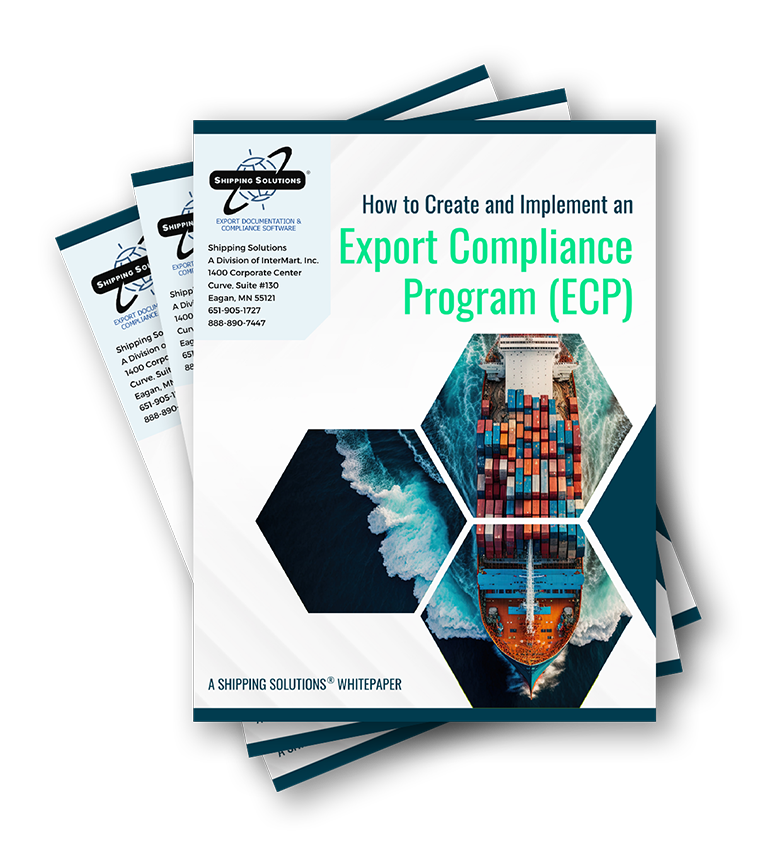The International Trade Blog Export Compliance
When Can You Throw Away Your Export Documents?
On: January 8, 2025 | By:  David Noah |
5 min. read
David Noah |
5 min. read
 Ever get in one of those moods where you’re ready to toss every single page from every single stack of paper sitting in a filing cabinet or bookshelf? Me too. But if you’re an exporter, you shouldn’t be too quick to throw away your export documentation.
Ever get in one of those moods where you’re ready to toss every single page from every single stack of paper sitting in a filing cabinet or bookshelf? Me too. But if you’re an exporter, you shouldn’t be too quick to throw away your export documentation.
Although it may seem like a headache to keep all your paperwork, there are quite a few rules regarding export document retention. If you do toss your export paperwork without paying attention to those rules, you could be in for an even bigger headache.
Keep Your Export Documents for at Least Five Years
As a general rule (outlined in Part 762 of the Export Administration Regulations), export regulations require you to maintain export documentation for at least five years after an export transaction is complete. Five years is the standard for most agencies that have a hand in exporting, including the Bureau of Industry and Security (BIS), U.S. Census Bureau, U.S. Customs and Border Protection (CBP), the State Department’s Directorate of Defense Trade Controls (DDTC) and other agencies.
In September 2024, however, the Office of Foreign Asset Controls (OFAC) released an Interim Final Rule that expands its recordkeeping requirement to 10 years, which aligns with changes doubling the statute of limitation for OFAC sanctions programs violations from five to 10 years. This new requirement applies to exports to prohibited parties even if exemptions and general licenses are available that don't require the exporter to apply for a specific license. This new rule goes into effect on March 12, 2025.
While at the time of this writing the other agencies haven’t announced any intention to increase their document retention requirements from five to 10 years, keep in mind that OFAC regulations can be broad and may impact your exports even if your goods fall under the jurisdiction of BIS or DDTC.
Also keep in mind that different federal agencies and departments start the clock on record retention at different points in time. Certain sets of regulations state you must maintain your documents for five years from the date of export. Others say five years after the export is complete. And still others say you must maintain the documents for five years after an export license has expired. It’s your job to know what those caveats are and abide by them. Even once those five or 10 years are up, you still may not be able to toss the records. If a government agency requests information pertaining to a particular export shipment before the five-year period is up, you must continue to keep all the records related to that shipment until you have written authorization to destroy them.
Know Which Export Documents to Keep
Different departments and agencies define export records differently.
The Export Administration Regulations (EAR), which cover most exports that don't fall under the jurisdiction of the U.S. State Department, define the types of records that must be retained. Those include:
- Export control documents as defined in Part 772 of the EAR
- Memoranda
- Notes
- Correspondence
- Contracts
- Invitations to bid
- Books of account
- Financial records
- Restrictive trade practice or boycott documents and reports (Read more about antiboycott compliance here.)
- Notification from BIS of an application being returned without action, being denied or being reviewed
- Other documents pertaining to the transaction
The EAR also identifies the dozens of types of records that are exempt from record-keeping requirements. You can see the list here.
The Foreign Trade Regulations (FTR) require that all parties in an export transaction be able to provide "EEI, shipping documents, invoices, orders, packing lists and correspondence as well as any other relevant information bearing upon a specific export transaction" within five years of the date of the export.
The International Traffic in Arms Regulations (ITAR) states that anyone who is required to register with DDTC to export items "must maintain records concerning the manufacture, acquisition and disposition (to include copies of all documentation on exports using exemptions and applications and licenses and their related documentation), of defense articles; of technical data; the provision of defense services; brokering activities; and information on political contributions, fees, or commissions furnished or obtained, as required by part 130 of this subchapter."
The ITAR requires that these records be maintained for five years from the expiration of the export license or other approval or from the date of the transaction when using an export license exemption.
Understand Who Is Subject to Record Keeping Requirements
As mentioned above, the EAR requires exporters and their agents (including freight forwarders) who export "commodities, software, or technology from the United States and any known reexports, transshipment, or diversions of items exported from the United States" to abide by these record-keeping requirements.
The FTR expands that requirement to include all parties in an export transaction including the owners and operators of export carriers, U.S. Principal Parties in Interest (USPPI), Foreign Principal Parties in Interest (FPPI) and authorized agents including freight forwarders.
The Importance of Export Document Retention
To be blunt, record keeping is one of the most critical tasks you have as an exporter.
In case of an export compliance audit, you must be able to find all pertinent documents related to any export transaction from the last five years at a moment’s notice. The Office of Export Enforcement will not make an exception just because you’ve stored older files in a facility 300 miles away. In fact, doing so will only illustrate that you’re ignoring best practices.
By keeping your records accurate, organized and easily accessible, you’ll have far less trouble should an audit occur. Read more about best practices for record keeping and preparing for and preventing an audit:
- Surviving an Export Compliance Audit: 3 Key Steps
- 10 Time-Saving Tips for Creating and Organizing Your Export Documents
If you don’t take control of your record keeping and you are audited, you could face fines and penalties that end your career as an exporter.
One Part of a Larger Plan
Knowing when to keep and throw away export documentation is just one part (although an important one) of a larger export management and compliance plan that reduces risk of export control violations.
You’re looking for an export documentation procedure that provides the following things (which you’ll eventually put in a written manual):
- Structure, organization and accountability.
- Consistent compliance processes.
- Procedures and tools to ensure accuracy.
- Training and awareness.
Get all the details for creating one in our white free guide, How to Create and Implement an Export Compliance Program (ECP). Just click below to get started.
Like what you read? Subscribe today to the International Trade Blog to get the latest news and tips for exporters and importers delivered to your inbox.
This article was first published in February 2021 and has been updated to include current information, links and formatting.

About the Author: David Noah
As president of Shipping Solutions, I've helped thousands of exporters more efficiently create accurate export documents and stay compliant with import-export regulations. Our Shipping Solutions software eliminates redundant data entry, which allows you to create your export paperwork up to five-times faster than using templates and reduces the chances of making the types of errors that could slow down your shipments and make it more difficult to get paid. I frequently write and speak on export documentation, regulations and compliance issues.


